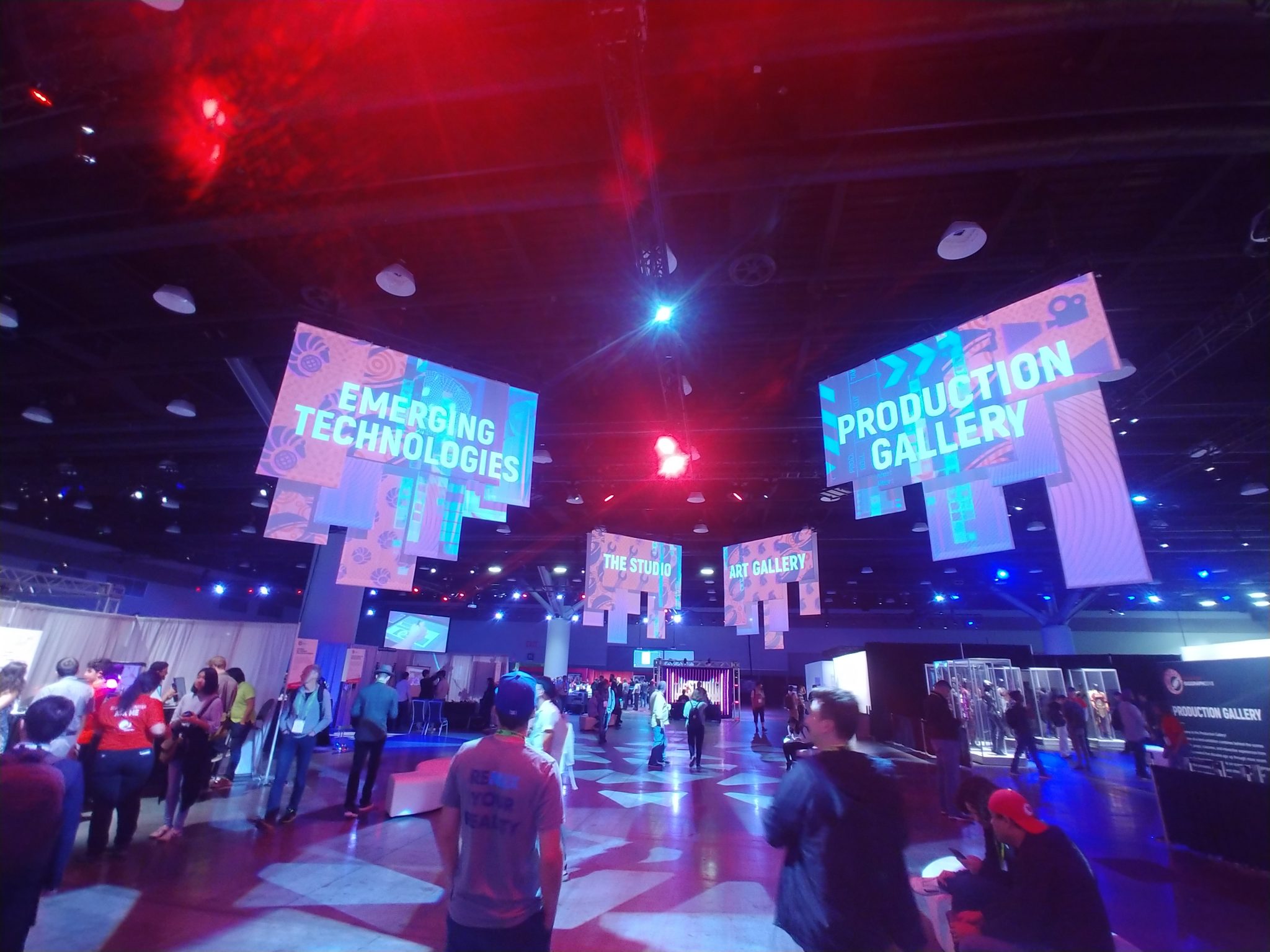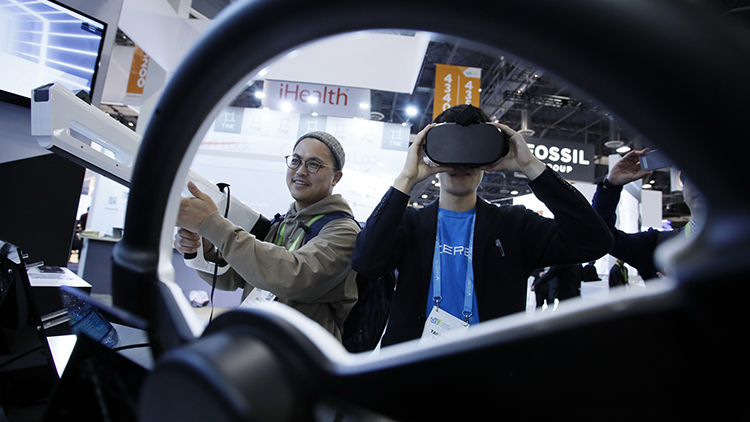Whether you’re big or small, every game or tech studio understands the marathon that is industry event season. From GDC in March to E3 in June, you could probably attend a different show each week; add VR/MR/AR to the list and it only gets crazier. We all know the big ones are important to make an appearance at, but it can be harder to know which of the smaller events are best for your particular flavour of tech.
And what if you’re an XR studio, like us here at Blueprint Reality? Now you’ve got the added challenge of scoping out a ton of new or rapidly growing VR events, on top of the worry that even well-known shows might not offer a huge platform for VR-specific games and apps.
Well, we might not have answers for all those question marks, but we did attend nine of these shows over spring and early summer of this year, and thought we’d share what we learned from each. We hope you find it as motivating as we do!
1. CES (Consumer Electronics Show)
Las Vegas, NV, January 9 - 12
What is it? As many of us know, CES is all about innovative and transformative tech that, ideally, will one day affect the way we live our day-to-day lives. From drones to smartwear and everything in between, CES literally has it all.
How was the VR scene? VR had an unmistakable presence at CES, with a number of companies exhibiting this year. While we didn’t have a booth presence, we got to try lots of demos such as the PiMax headset and Tobii eye tracking.
The Takeaway: There are now so many VR products and technologies (and increasingly complex ways of interconnecting them) that your average consumer is looking for something simplified. This means a strong trend towards linking products together within an ecosystem, and having them work together seamlessly. That had a huge impact on us, and is why we continue to push MixCast to be an “all-in-one” solution, where everything is at your fingertips within one piece of software.
2. The Amusement Expo
Las Vegas, NV, February 27 - March 1
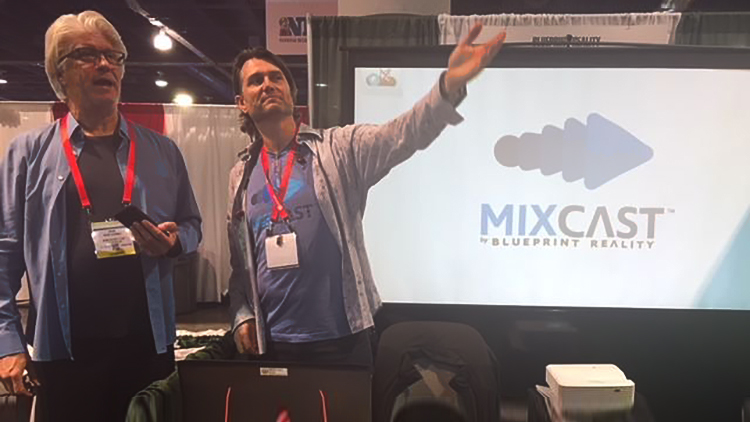
What is it? Amusement Expo is an LBE (location-based entertainment) industry event run by the AMOA (Amusement & Music Operators Association) and AAMA (American Amusement Machine Association.) The three-day event is dedicated to everything from new carnival games, to high-tech photobooths, to gumball machines. (Fun fact: The gumball machine industry is a real thing and it’s apparently doing better than you’d think.) If you’ve ever played Pierhead Arcade, it’s a bit like that, but times a thousand.
How was the VR scene? Get this: no one knew about VR, despite LBE being on the rise in the VR sector. And they were totally blown away by it, especially when MixCast was able to so easily communicate what a VR experience is like inside the headset.
The Takeaway: Once these LBE pros understood what the heck they were looking at, mixed reality seemed like the natural progression to everyone we demo’d to. With the rise of LBVR, it’s a promising new world for us VR folks to explore.
3. VRDC/GDC
San Francisco, CA, March 19 - 23
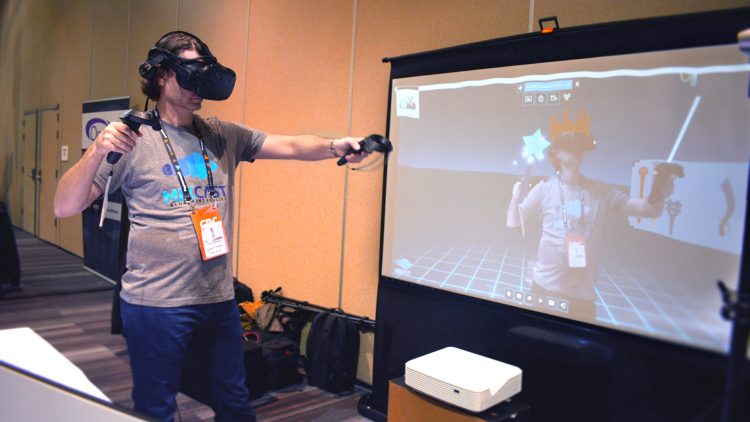
What is it? We know you know what GDC is, but VRDC is a smaller two-day event preceding GDC, with a heavy focus on intimate demos and keynote sessions.
How was the VR scene? VRDC, of course, was excellent! Especially for MixCast, as we revealed our new WildKey tech for the very first time, featuring green-screenless background removal with the Intel RealSense depth camera. At GDC, we had the pleasure of guesting in the Intel VR booth, where we showed Trickster VR with MixCast, alongside VR experiences like Survios’ Creed, Sprint Vector, and Archiact’s Evasion. There were tons of booths showcasing excellent new VR content, but apart from the MixCast booth, none of them were using mixed reality to demonstrate their product with a human presence within it
The Takeaway: Check out our official GDC Recap here for the full story! In short, the general gaming/tech crowd is officially VR-savvy now. Not only did we not have to give the “so there’s this thing called VR…” speech, people were coming up to us to tell us about their own varied experiences with VR, and creative applications for tools like MixCast. We’re glad this big stop came early in our circuit, as it provided a huge motivational boost for the next round of shows!
Wondering what the #VR/#MR scene is like at #GDC2018? We’re about to check out some of the many VR booths here, follow along to see what’s new… (Thread!) pic.twitter.com/qLu9gQzoe5
— Blueprint Reality (@blueprntreality) March 22, 2018
4. NAB (National Broadcasters Association) Show
Las Vegas, NV, April 9 - 12
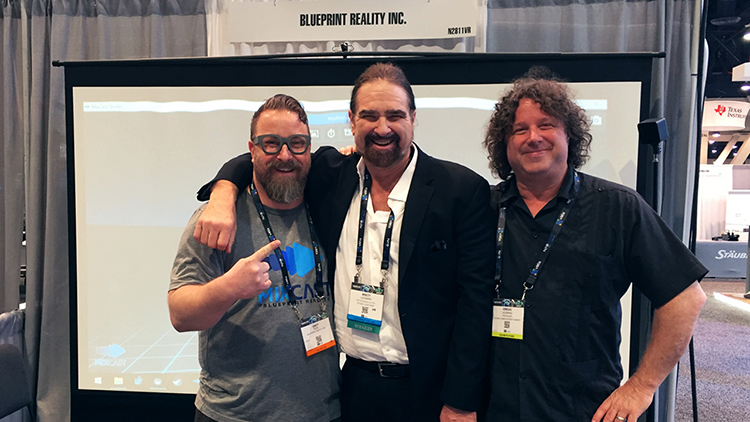
What is it? The NAB Show is an enormous conference spanning multiple floors and days, and is the second largest show held at the Las Vegas Convention Centre, behind CES. From cameras to dollies, from audio to video tech: if it has something to do with broadcasting, you’ll see it in all shapes and sizes at NAB.
How was the VR scene? While we barely scratched the surface with our own exploration, VR was present in a few talks and booths, but not widespread. As for us, we demonstrated MixCast with the depth camera for a second time; this time, we had tons of people milling around in the background of our camera view, so having the depth cut-off in the Intel RealSense camera was a must.
The Takeaway: While VR/AR/MR is widely understood within gaming circles, these mainstream media and TV crowds aren’t quite as savvy yet. One demonstration of that (which we saw quite often) was the lack of distinction between VR and 360 video, the latter of which was much more common at NAB. One reason for this might be that VR is still very much a games-dominated technology, which doesn’t overlap much with the NAB audience. Immersion can add so much value to broadcasters, especially real time mixed reality; it’s up to VR creators like us to demonstrate the value to them, and give them an easy plug-and-play system to help them bring that immersive element to their broadcasts.
5. VR Arcade Conference
Mountain View, CA, April 28 - 29
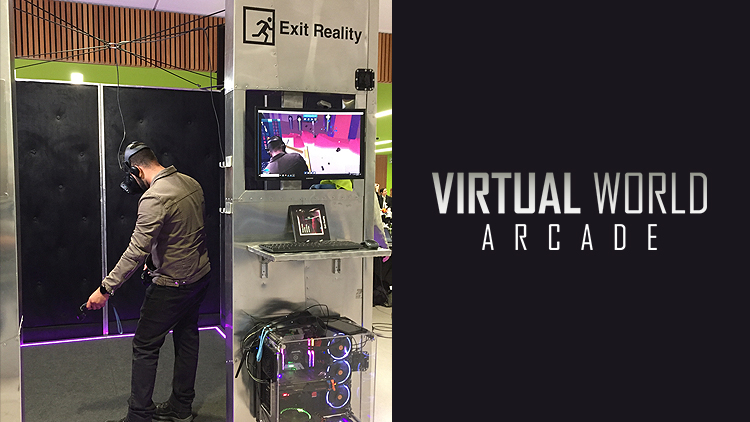
What is it? Run by the VR World Arcade, this VR conference is smaller and (as its name would suggest) leans more heavily into the application of VR as location-based entertainment, specifically arcades.
How was the VR scene? This conference is entirely VR-centric, and featured many talks and sessions. We partnered with our good friends at Exit Reality to bring the power of mixed reality to their iconic VR Cube. Awaken and Richie’s Plank Experience were the games of choice, and despite these experiences having been around for a while, they still received excellent praise from our visitors. Awesome show, everyone!
The Takeaway: This is a particularly great conference if you’re looking to network. Since it’s smaller and occurs during a bit of a lull in events season, VRAC’s relaxed atmosphere is going to offer a lot more opportunities for solid conversations and connections to be made, without the stress and noise of a larger expo.
6. VRLA
Los Angeles, CA, May 4 - 5
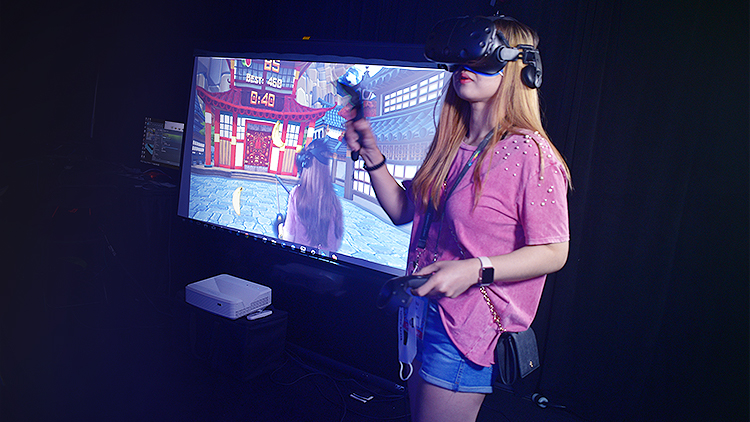
What is it? VRLA feels like the cool kid of the VR industry event crowd, with its rad 80s branding and a focus on fun, experiential VR. It’s also one of the few consumer events we attended (Day One is for industry only, with the doors opening up to the public on Day Two) so it was a good opportunity to check the pulse of VR in the larger, more nebulous world of mainstream consumers.
How was the VR scene? As strong as you’d expect! VRLA is a darker show floor with an emphasis on visual showpieces and performance, so there’s a hundred things to drink in at any time and it’s easy to become overwhelmed. We brought our go-to demo (MixCast + an Intel RealSense depth camera + Fruit Ninja VR) and it was a hit with consumers, especially younger ones who were familiar with the original Fruit Ninja. We were also exhibiting across from a gorgeous AR art installation called MEZO. The lineups were long all weekend, and really demonstrated the value of VR in a performance context. As we often see, there was very little mixed reality on the floor.
The Takeaway: Again, the trend of “everyone more or less knows what VR is” continued with Industry Day, but come Consumer Day, we were running into more people who were just here to learn about a new tech and have a great time. Interestingly, we caught some YouTubers that most would consider “mainstream” on scene. (Shoutout to Trisha Herschberger and iJustine!) Creators like them have been adopting more VR content into their channels, so it’s a wonderful vote of confidence for the spread of VR into the mainstream.
Mixed reality in @FruitNinja #VR, sans green screen! 🍉⚔️🍊#VRLA2018 #Mixedreality #MixCast pic.twitter.com/S8bKP2jCvA
— Blueprint Reality (@blueprntreality) May 5, 2018
7. #BCTECHSummit
Vancouver, Canada, May 14 - 16

What is it? Year after year, the #BCTECHSummit has proven itself as the premiere place to showcase BC’s innovation and tech breakthroughs on the national stage. While we all know each other quite well at this point, the new businesses, ventures, and solutions being presented each year elevates it to a place of learning and collaboration between the many verticals of tech.
How was the VR scene? Blueprint Reality was invited to guest demo with MixCast and Fruit Ninja VR in the Cube’s booth, along with other local studios such as Cloudhead Studios and LlamaZoo. VR continues to command a strong presence at BCTECHSummit, and so it often becomes the nexus that many other verticals are exploring partnerships with. VR can offer new methods of interaction and engagement with almost every other type of tech, from the medical sector to real estate.
The Takeaway: Prevent those verticals from becoming silos that never interact! How can a game studio and a filmmaker come together to make a new type of engaging media? Could the medical sector be augmented by the tech of a VR studio? These are the questions #BCTECH wants us to keep asking ourselves, and each other.
8. FOIL (Future of Immersive Leisure)
Las Vegas, NV, May 16 - 17
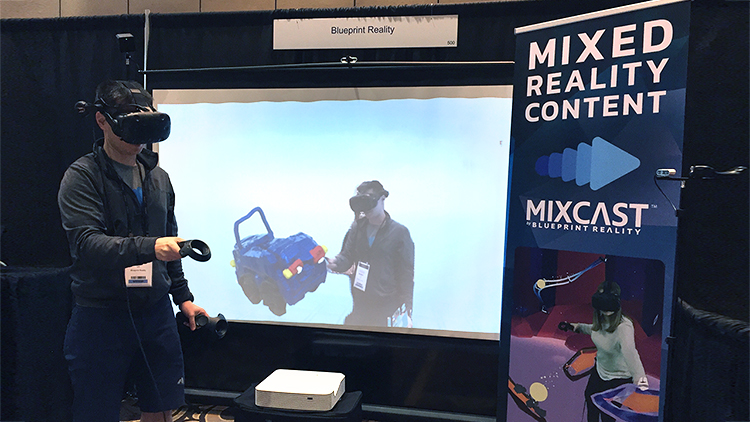
What is it? The Future of Immersive Leisure conference might feel like a lot to say, but it’s sort of appropriate, given that people have a lot to say at this show, due to its incredibly intimate size. (We’re talking one ballroom, where MixCast was one of just seven lucky booths to be demo’ing.)
How was the VR scene? VR is definitely the focus of FOIL, although its keynotes and fireside chats push us to think further than just the games themselves. Leaders in the space such as Charlie Fink and Jesse Schell headed discussions around VR applications beyond the home, including LBE, eSports, and branding.
The Takeaway: Similar to the VR Arcade Conference, this is a fantastic place to be if you’re looking to exchange knowledge with VR leaders, especially if you’re curious about expanding your VR past games, and into new and valuable territories.
(Also, thank you to Jesse Schell for dropping by our booth, and to Charlie Fink for donating three copies of his excellent new AR book, Metaverse, to our studio library!)
9. AWE (Augmented World Expo)
Las Vegas, NV, May 16 - 17
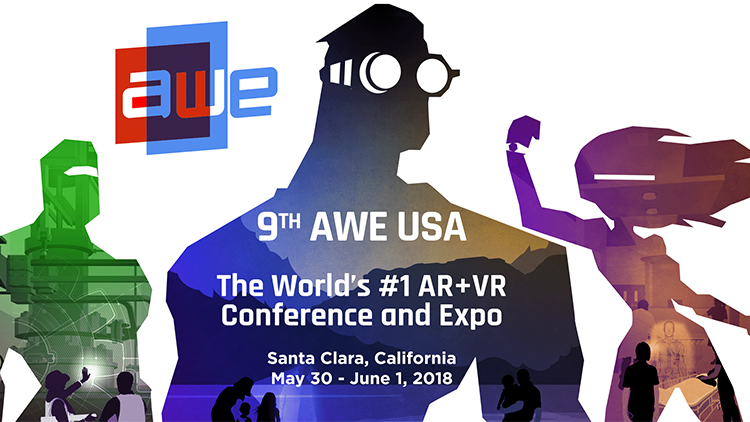
What is it? AWE is seen as a standard stop on the VR event circuit now, and whether you’re on the hunt for new experiences, expert panels and discussions, or a floor full of demos, this one is very well-rounded.
How was the VR scene? VR is the name of the game here, but it felt like AR was very much having a moment on the show floor, especially when it came to hardware such as glasses and visors. We also noticed a trend towards more practical applications of VR/AR, while pure games and entertainment seemed to have less of a presence than last year.
The Takeaway: If you’re only going to go to a handful of events, this one will probably offer you plenty to make it worth your while! (Especially if you’re in AR or LBVR, which were the buzzy topics of choice throughout the show.) We’re not sure if they’ll do this again next year, but this year they had great product pitch sessions, with techie hopefuls giving brief demos and proposals in exciting five minute slots throughout the day.
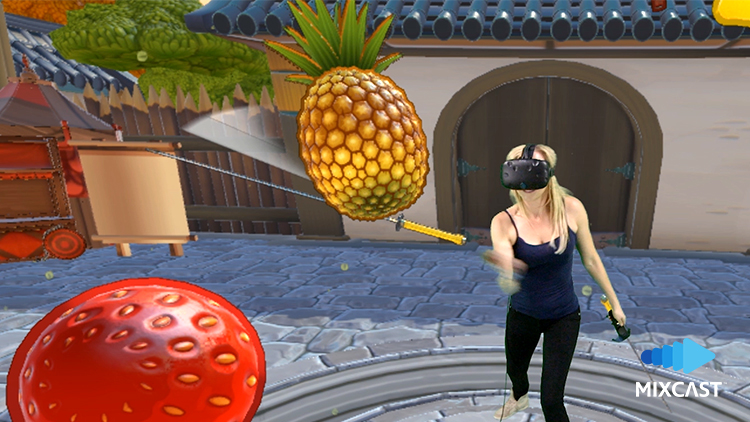
We hope this little recap of our time on the VR industry event circuit was helpful to you – if it was, feel free to follow us on Twitter, Facebook, or subscribe to our newsletter to see the next industry update!
Last but not least...
Finally, after all those events, we thought it’d be nice to leave you with our favourite moment: On the consumer day at VRLA, we had a young family of Spanish-speaking VR fans come by, intrigued by the MixCast feed of Fruit Ninja VR. None of our team speaks Spanish very well, so there was a bit of a language barrier, but the moment they put on the headset and fired up Fruit Ninja in MixCast, those barriers really just evaporated. The experience in Fruit Ninja was intuitive enough to eliminate the walls, and we joined the family in cheering their kids on. (Believe us when we say this family got into it.)
When you’re watching someone in VR through mixed reality, there’s a sort of mutual experience that removes the need for talking, and communicates through fun and social interaction instead. And it’s completely awesome. With MixCast, that’s really what we’re here to do, and it was worth every early flight and heavy bag lugged through an airport to see it first-hand.

